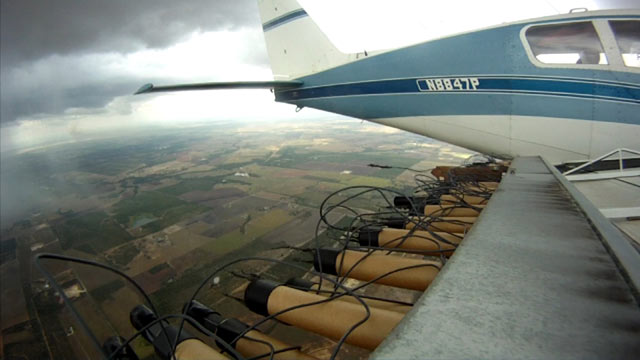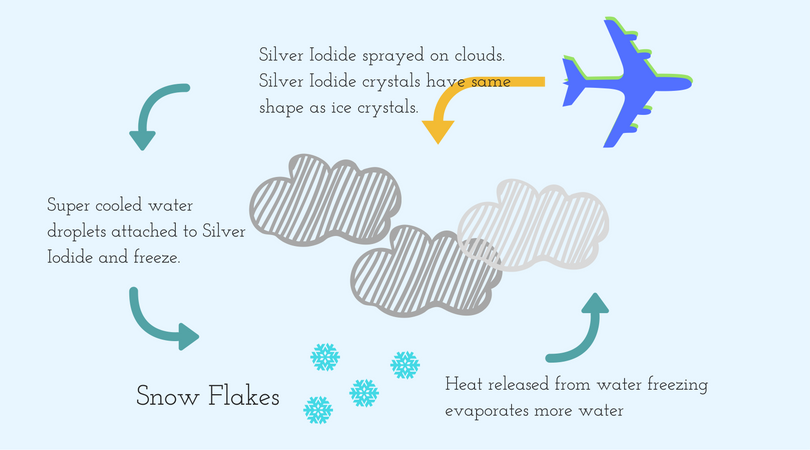Imagine being able to control the weather, specifically to induce rain in areas experiencing drought or water scarcity. It may sound like something out of a science fiction novel, but artificial rain, also known as cloud seeding, is a real phenomenon that has been used for decades to enhance precipitation.
In this captivating article, we will dive into the fascinating world of artificial rain, exploring the science behind it, and the methods employed to make it happen. Prepare to be amazed as we uncover the secrets of how humans can influence nature's water cycle and potentially alleviate drought-stricken regions.
In 2024, Dubai experienced heavy rainfall, which is speculated to be triggered by Artificial Rain because Dubai conducts Cloud Seeding regularly. Although, as per Climate experts, the recent downpour was primarily because of Climate Change.
What is Artificial Rain?
It’s a practice of artificially inducing or increasing precipitation through clouds by adding external agents.
The foreign particles which are drenched over these clouds can be Dry Ice(solid carbon dioxide), Silver Iodide, Salt powder, etc. This process is known as Cloud Seeding. This stimulation is done by airplanes or rockets. And then finally "rain on".

Why Artificial Rain?
We know how the process of rain works. It starts from the evaporation of water from the sea or any other water body. Then it travels upstream as the wind rises high in the troposphere(the bottom layer of the atmosphere) causing some drops to merge and then this merging process goes on and when the thickness of the drop comes in the vicinity of 0.1mm it cannot float up there anymore and finally we get bestowed by the almighty rain.
But then why do we have to tackle drought? Often there are clouds but no rain. Well, one could try to make it rain. And that’s where ARTIFICIAL RAINFALL comes along. When the temperature of clouds is close to "0" there might be crystals of ice in it. Then water vapors do not condense to their liquid form. This is metalized by the cloud seeding and once again it rains, but this time artificially
How it is done?
Well, let's see how this is done.
Agitation
The first stage includes the use of chemicals to stimulate the air mass upwind of the target area to rise and form clouds. These chemicals absorb the water vapor and help in the process of condensation. Chemicals like - Calcium Oxide, a compound of Urea and Ammonium Nitrate, or Chloride Calcium Carbonate.
Building Up Stage
In the second stage, the mass of the cloud is built up by urea, dry ice, kitchen salt, etc to increase the density of the clouds.
Seeding
In the final stage of pursuing the artificial rain, super cool chemicals (dry ice or iodide) are bombarded with pressurized canisters onto the base of the clouds to build the beads of water and make them fall as rain.

It's a simple phenomenon. Let me explain to you with an example, think of a water tank with many impurities and dust particles floating over it, when you add alum to the water tank, the impurities settle down. What happens then? The particles collide with each other after adding alum as a catalyst, become heavy, and settle down. That's how it goes up there in the clouds. The charged particles are suspended and are very small to fall down as rain. That's why an agent is sprayed over there which makes them collide and thereby it becomes heavy and falls down. kudos! you got the whole concept of artificial rain.
Conclusion
Artificial rain, the process of influencing rainfall through cloud seeding, is a captivating and promising technique in the realm of weather modification. By understanding the science behind it and exploring its applications, we gain insight into how humans can harness the power of nature to alleviate water scarcity and mitigate the effects of drought.
While cloud seeding is not without its limitations and environmental considerations, it offers a glimpse of our ability to intervene in the natural world. As research and technology continue to advance, artificial rain may become an increasingly important tool in our efforts to sustainably manage water resources and create a more balanced climate.
Frequently Asked Question(FAQs)
Here are some frequently asked questions.
1. What is artificial rain?
Artificial rain, or cloud seeding, is the process of introducing substances into clouds to stimulate the formation and growth of raindrops. This technique aims to enhance precipitation in areas where rainfall is inadequate or to disperse fog or smog.
2. How does cloud seeding work?
Cloud seeding typically involves dispersing substances, such as silver iodide or dry ice, into clouds. These particles act as nuclei, promoting the condensation of water vapor and the formation of raindrops or ice crystals, eventually leading to precipitation.
3. What are the applications of artificial rain?
Artificial rain has various applications, including increasing water supplies, reducing the impact of droughts, mitigating forest fires, suppressing hail, and improving air quality by dispersing pollutants.
4. Is artificial rain effective?
The effectiveness of artificial rain can vary depending on factors such as atmospheric conditions, target area, and the method of cloud seeding. While it has shown positive results in some cases, it is not a guaranteed solution and is considered a supplementary approach to natural precipitation.
5. Are there any environmental concerns associated with cloud seeding?
Cloud seeding is generally considered safe and has been practiced for decades. However, some concerns revolve around the potential environmental impact, such as unintended effects on ecosystems, water contamination, or altering natural precipitation patterns.
You may also like: